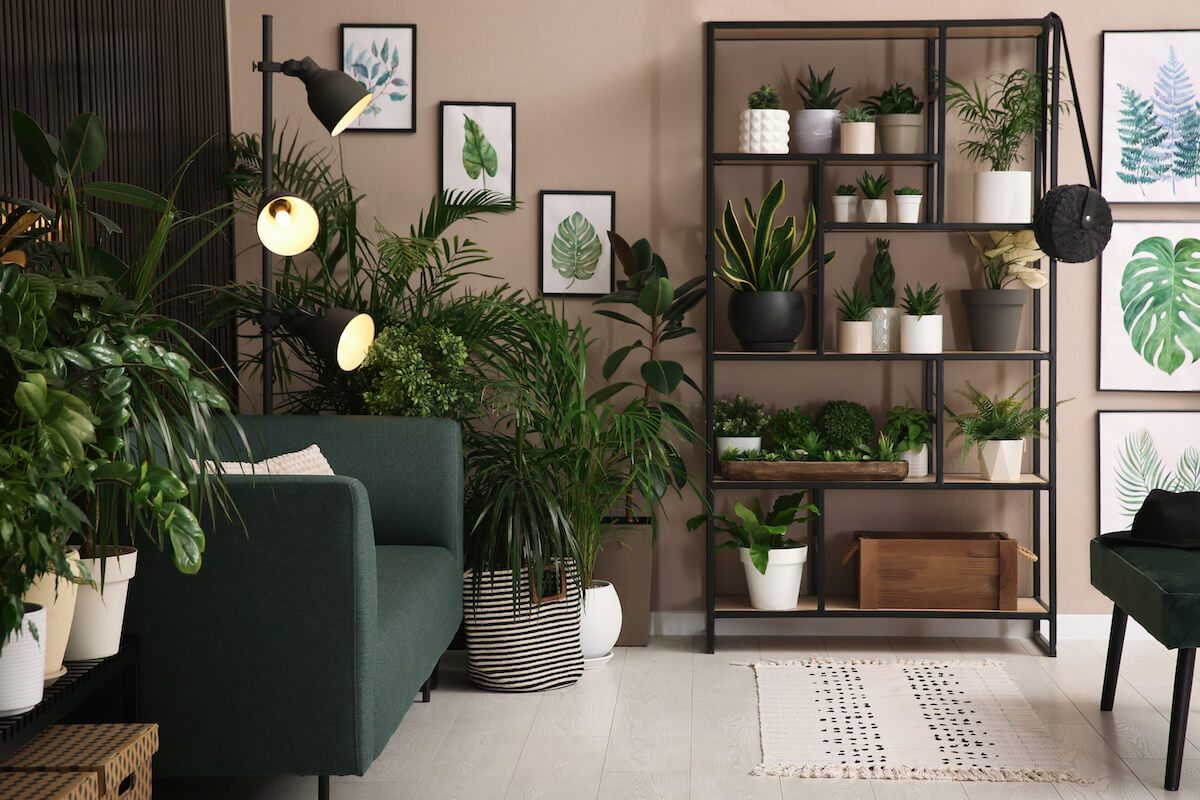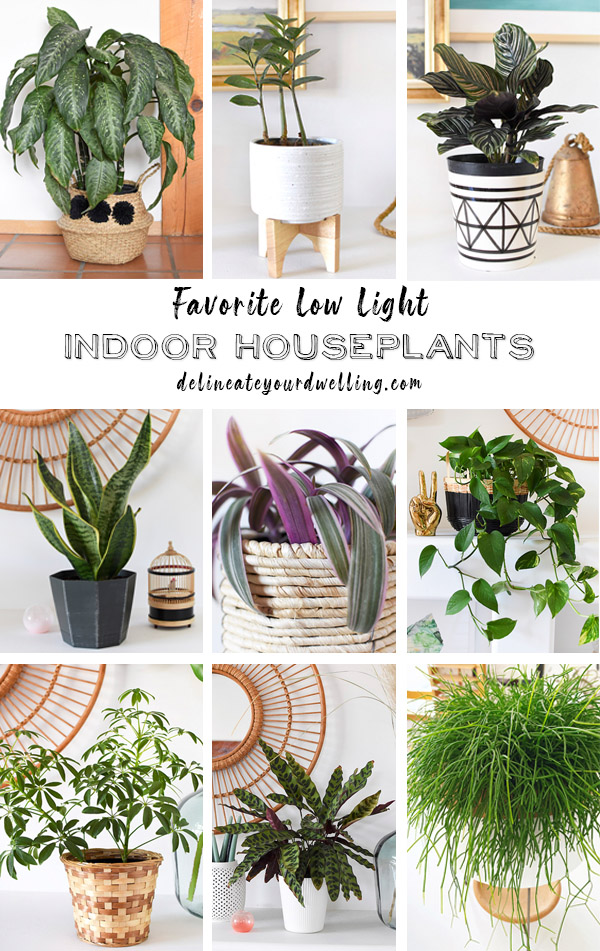A Guide to the Best Low-Light Indoor Plants for Small Spaces
A Guide to the Best Low-Light Indoor Plants for Small Spaces
Blog Article
Discover the Secrets of Low-Light Indoor Plants and How They Improve Your Setting
Low-light interior plants have actually amassed raising attention for their one-of-a-kind capability to improve both aesthetic allure and ecological high quality within work environments and homes. These resistant species, consisting of the Serpent Plant and Peace Lily, not only prosper in challenging illumination conditions but additionally play a pivotal duty in air filtration and emotional well-being.
Advantages of Low-Light Indoor Plants
Although lots of people think that interior plants call for bountiful sunlight to flourish, low-light interior plants use a wide variety of advantages that make them excellent for different settings. One of the primary benefits is their adaptability; they can prosper in spaces with limited natural light, such as offices, cellars, or rooms with small home windows. This feature enables people to enhance their surroundings with plant, contributing to boosted appearances without the requirement for substantial lights alterations.
Additionally, low-light indoor plants can considerably boost interior air top quality by releasing and filtering system unsafe toxic substances oxygen, making living areas healthier. The presence of plants has actually been linked to greater sensations of serenity and emphasis.
In addition, low-light plants usually call for less upkeep than their sun-loving counterparts, making them perfect for active individuals or those brand-new to gardening. Their durability allows them to love marginal treatment, hence supplying a fulfilling experience for plant fanatics and novices alike. In recap, low-light indoor plants serve both useful and visual functions, making them beneficial additions to any type of room.
Top Low-Light Plant Ranges
Low-light interior plants been available in a range of varieties, each offering unique features and benefits fit for dim environments. Amongst one of the most preferred varieties is the Serpent Plant (Sansevieria), known for its building fallen leaves and air-purifying capabilities. This durable plant thrives on neglect and can tolerate a large range of light conditions.
One more superb selection is the ZZ Plant (Zamioculcas zamiifolia), which includes shiny, dark green fallen leaves and is very drought-tolerant. Its adaptability makes it a favorite for offices and homes with limited sunshine.
The Pothos (Epipremnum aureum) is likewise a leading competitor, with its routing vines and heart-shaped leaves - Best low-light indoor plants. This versatile plant can be trained to climb or cascade, including aesthetic rate of interest to any space

Treatment Tips for Low-Light Plants
Looking after low-light indoor plants calls for a nuanced understanding of their specific needs to guarantee optimal development and vitality. It is important to choose the right potting mix, as a well-draining soil is critical to avoid root rot. A mix designed for houseplants, often consisting of peat moss and perlite, functions well for most low-light selections.
Watering is an additional crucial element of treatment. Low-light plants generally call for much less constant watering compared to their sun-loving equivalents. It is suggested to inspect the top inch of dirt; if it feels dry, it's time to water. Overwatering can bring about issues such as mold and origin degeneration.
Fertilizing ought to be come close to with care. Throughout the growing season, a watered down liquid plant food can be applied monthly, yet in winter season, several low-light plants enter inactivity and need little to no fertilization.
Last but not least, it is essential to regularly cleanse the leaves to remove dust, enabling far better light absorption. By sticking to these treatment ideas, you can cultivate a growing atmosphere for your low-light interior plants, enhancing both their appearance and longevity.
Enhancing Air High Quality With Plants
Indoor plants play a considerable duty in boosting air quality within homes and workplace rooms. Through the process of photosynthesis, these plants take in co2 and release oxygen, adding to a much healthier atmosphere. Additionally, specific low-light indoor plants have the ability to filter harmful toxins, such as trichloroethylene, formaldehyde, and benzene, which are frequently located in indoor environments.

In addition, the existence of indoor plants can increase humidity levels, which aids relieve completely dry skin and respiratory system concerns, additionally boosting total wellness. This capacity to boost air quality not only promotes physical find more information wellness however likewise sustains psychological wellness.
Integrating low-light interior plants into your living and functioning areas can bring about a much more dynamic and invigorating atmosphere (Best low-light indoor plants). Purchasing these all-natural air cleansers is a basic yet efficient strategy for improving interior air top quality and promoting a much healthier way of living
Developing a Peaceful Indoor Space
The combination of plants right into living spaces not only improves air quality but additionally adds to a serene atmosphere. Low-light interior plants, such as snake plants and pothos, are especially reliable in creating a tranquil setting, as they thrive in conditions that might otherwise be inhospitable for various other greenery. Their rich vegetation provides a soothing visual, lowering stress and anxiety and promoting relaxation.
Integrating these plants right into your office or home can evoke a feeling of peace and wellness. Strategically placing them in areas where you spend significant time, such as living workspaces or spaces, permits an immersive experience with nature, which has been revealed to boost mood and cognitive function.
Furthermore, the gentle activity of fallen leaves in reaction to air movement can produce a vibrant aesthetic component that boosts the general setting. Think about using a variety of plant heights and structures to add deepness and rate of interest to your space. With thoughtful placement and care, low-light indoor plants can transform any type of location into a tranquil haven, cultivating not only aesthetic fulfillment but mental and also psychological health.

Final Thought
Including low-light indoor plants right into numerous settings yields substantial advantages, consisting of boosted air top quality and enhanced aesthetic allure. The transformative power of low-light plants highlights their worth in boosting both job-related and household setups.
Although numerous individuals assume that interior plants need plentiful sunlight to flourish, low-light indoor plants use a wide variety of benefits that make them perfect for numerous environments.In addition, low-light indoor plants can significantly enhance indoor air high quality by releasing and filtering hazardous toxins oxygen, making living spaces healthier. visit here In addition, certain low-light interior plants possess the ability to filter harmful pollutants, such as formaldehyde, Visit Website benzene, and trichloroethylene, which are frequently discovered in indoor settings.
Low-light interior plants, such as serpent plants and pothos, are especially reliable in developing a serene atmosphere, as they prosper in problems that may or else be unwelcoming for other greenery.Including low-light interior plants into various settings returns substantial benefits, including enhanced air quality and improved visual appeal.
Report this page